🎯 Customer qualification scoring
Build custom Fit & Activity scores using any data point to provide foundational insights on potential customer engagement and conversion likelihood. Employ RFM analysis to segment customers based on their purchase behavior for targeted interactions.
About this use case
Customer qualification scoring helps you to prioritize leads and identify high-potential customers by assessing their fit and activity levels. By leveraging custom Fit & Activity scores, you can gain insights into potential customer engagement and conversion likelihood. This use case is crucial for optimizing marketing and sales efforts, ensuring that resources are focused on the most promising leads, and enhancing customer segmentation through Fit & Activity analysis.
Benefits
- Improved lead prioritization: Focus on leads with the highest potential for conversion.
- Targeted marketing campaigns: Segment customers based on behavior and fit for personalized interactions.
- Enhanced customer insights: Understand customer engagement and conversion likelihood through detailed scoring.
- Efficient resource allocation: Allocate sales and marketing resources to leads with the highest scores.
- Informed decision-making: Utilize data-driven insights to refine marketing and sales strategies.
- Increased conversion rates: Implement strategies that align with top leads' identified needs and behaviors.
How it works
Step 1: Create a Fit & Activity model
-
Navigate to the Fit & Activity section:
- Go to Fit & Activity and select "Create model".

-
Define fit criteria:
- Identify attributes that define your ideal customer (e.g., demographic and firmographic information like company size, job title, etc.).
- Assign weights to each attribute to reflect its importance in qualifying a lead. For example, assign higher weights to attributes that indicate a stronger conversion potential.
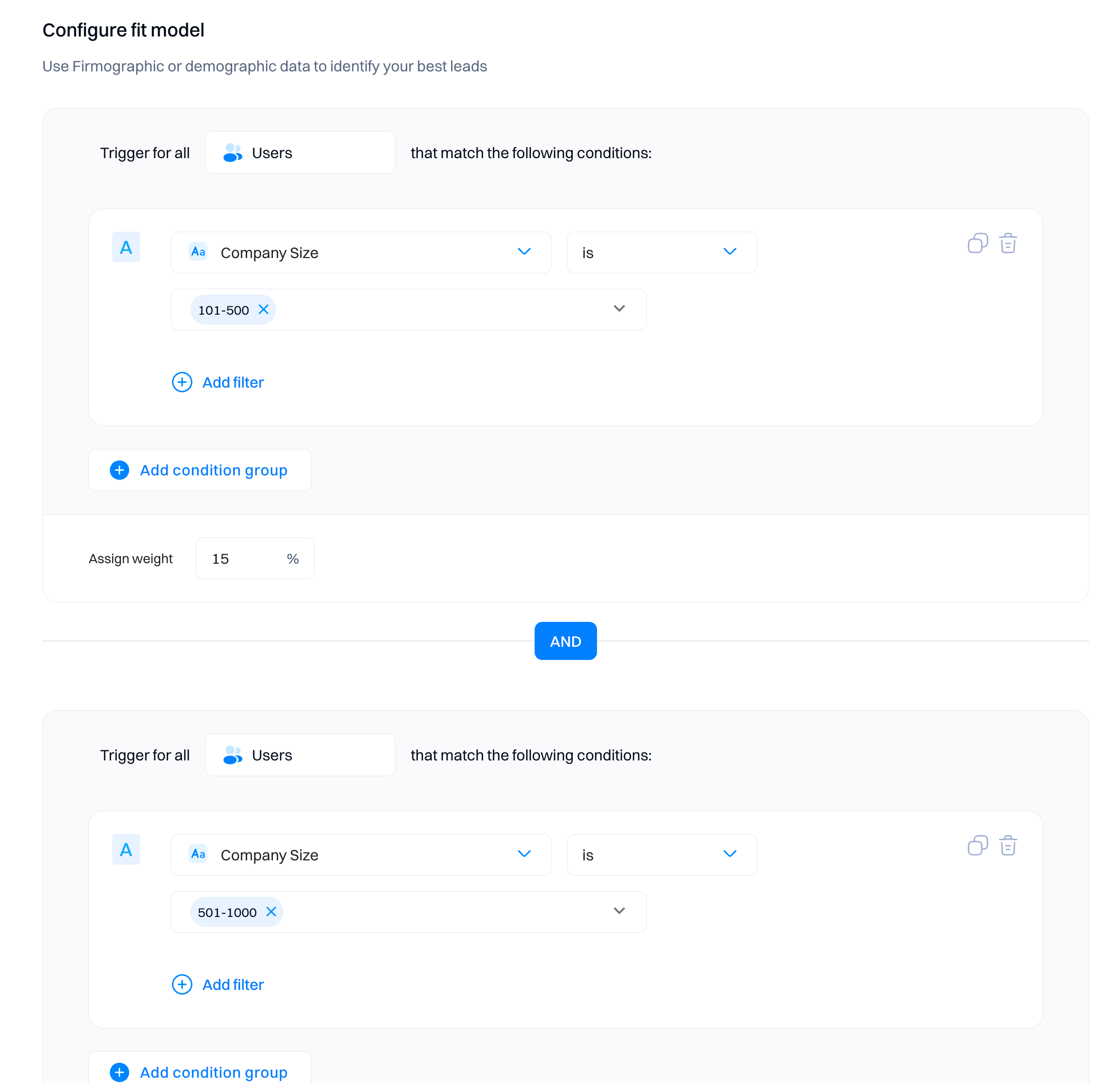
Example Fit Model for Marketing Qualified Leads (MQL):
Attribute Value Weight Job Title C-level executive 30 Director 20 Manager 10 Other 5 Company Size Over 1000 employees 25 501-1000 employees 20 101-500 employees 15 Less than 100 employees 10 Industry Tech 20 Healthcare 15 Finance 15 Other 10 Budget Authority Confirmed budget 25 No budget yet 10 Decision-Making Power Sole decision maker 25 Part of a decision committee 15 No decision power 5 -
Create multiple fit categories:
- Add at least three categories to ensure a robust fit model by selecting "Add category" and defining each with its weight and condition.
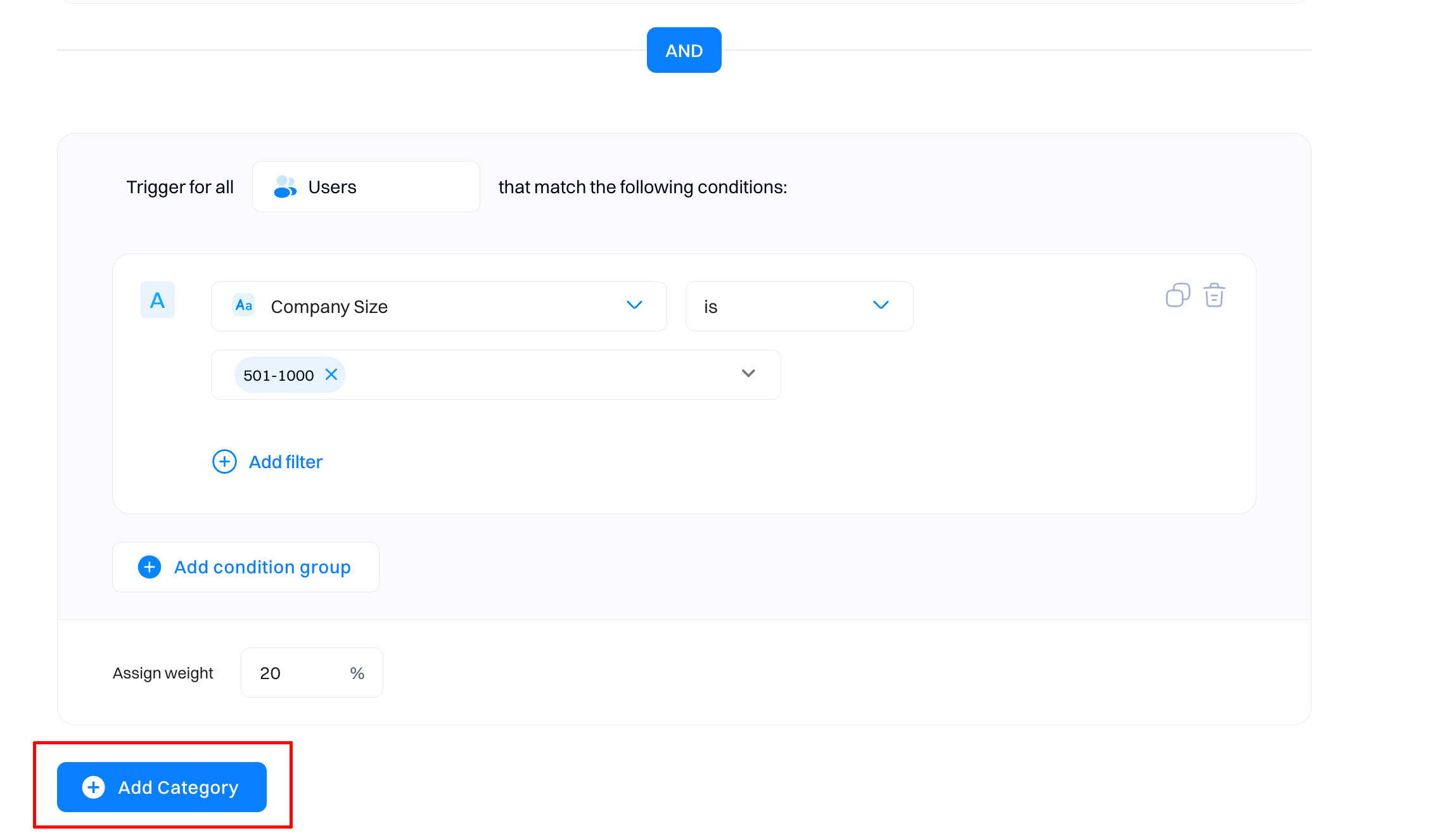
Step 2: Define the activity criteria
-
Select activity events:
- Identify key actions that indicate lead qualification (e.g., logins, signups, purchases).
- Prioritize these events based on their relevance to different buyer personas.
-
Assign weights to activity events:
- Like with the fit criteria, assign weights to each activity event to reflect its significance in indicating lead engagement. Ensure that you also add decay to the model. Decay refers to reducing the value or impact of a particular action or behavior over time. This concept reflects the natural tendency for an activity's significance to diminish unless reinforced or repeated.
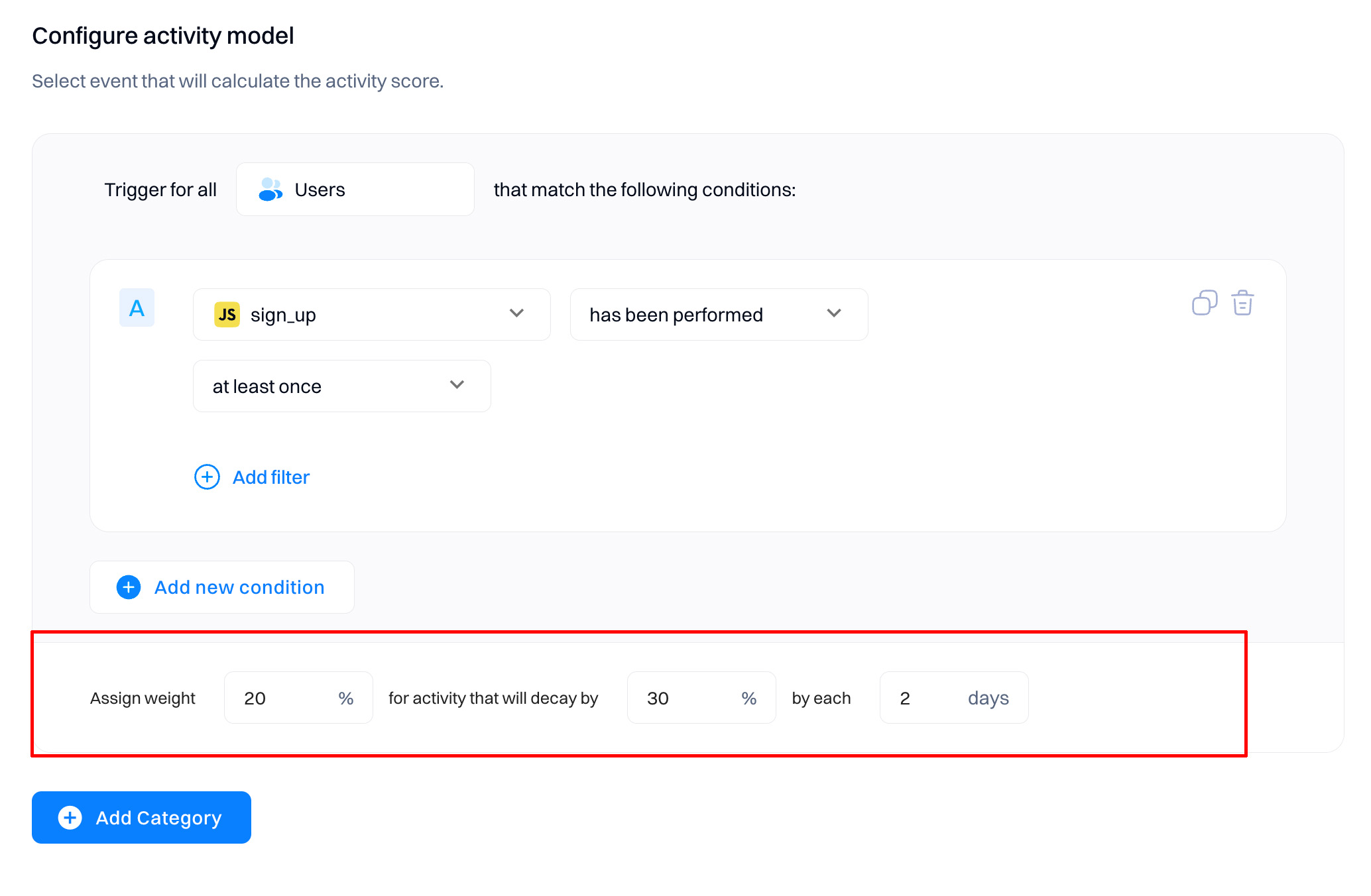
Example Activity Model for MQL:
Activity Event Weight Decay Days Product Engagement Logins 20 30% 2 Feature Usage 25 20% 3 Conversion Activities Trial Signups 30 10% 5 Completed Onboarding 35 25% 4 Marketing Engagement Attended Webinar 15 15% 7 Downloaded Whitepaper 10 20% 5 Clicked Email CTA 20 20% 3 Visited Pricing Page 25 30% 2
Step 3: Normalize and calculate scores
-
Normalization:
- Intempt normalizes the scores based on the assigned weights, ensuring that the sum of weights does not need to be exactly 100%. The system will automatically adjust the scores proportionally.
-
Score calculation:
- The model calculates scores for each lead based on the defined fit and activity criteria, outputting them as "low", "medium", or "high".
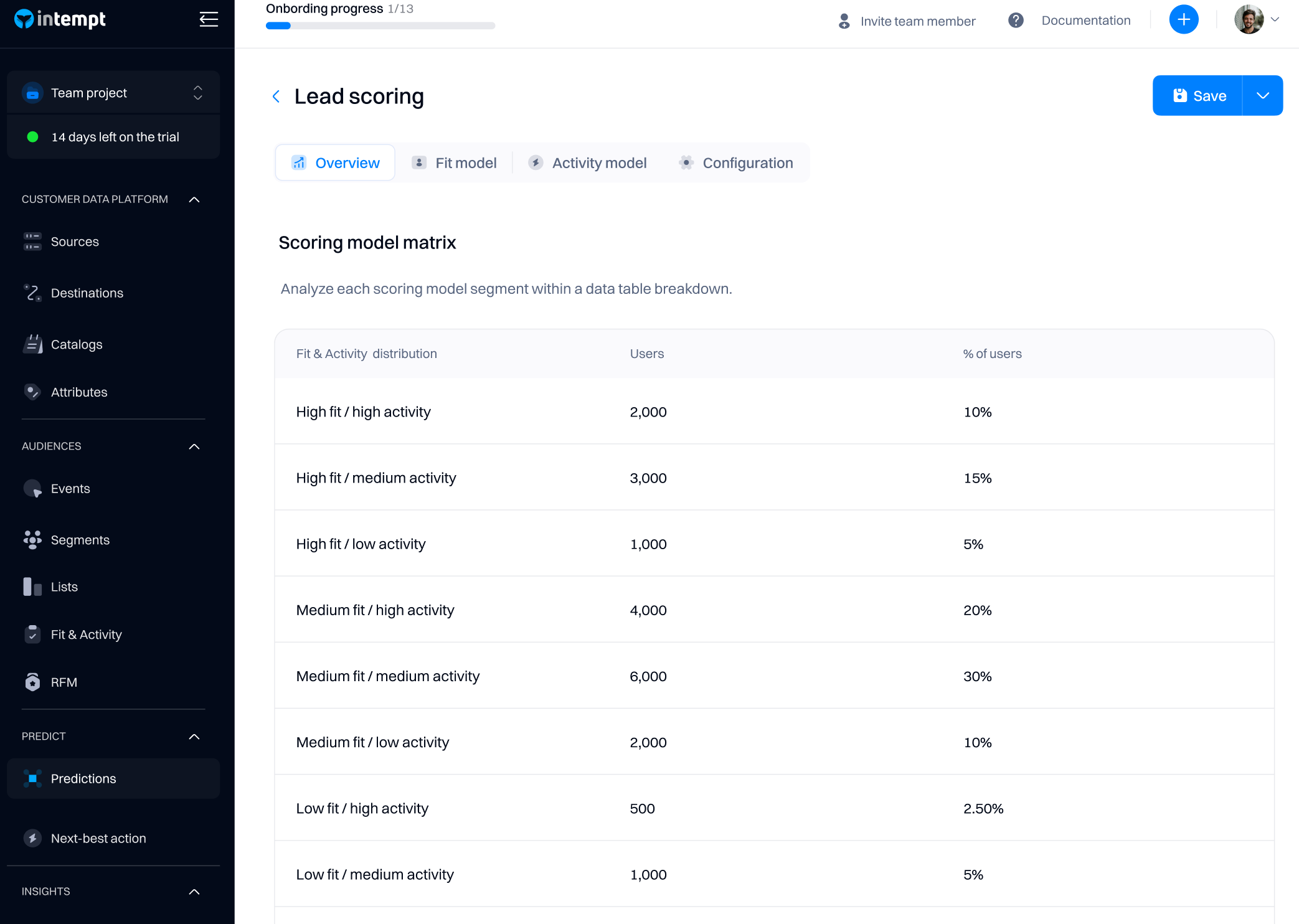
Step 4: Utilize scores for segmentation and engagement
-
Segment customers:
- Use the calculated Fit & Activity scores to create customer segments. For example, group customers into segments like "High Fit & High Activity" for targeted marketing campaigns.
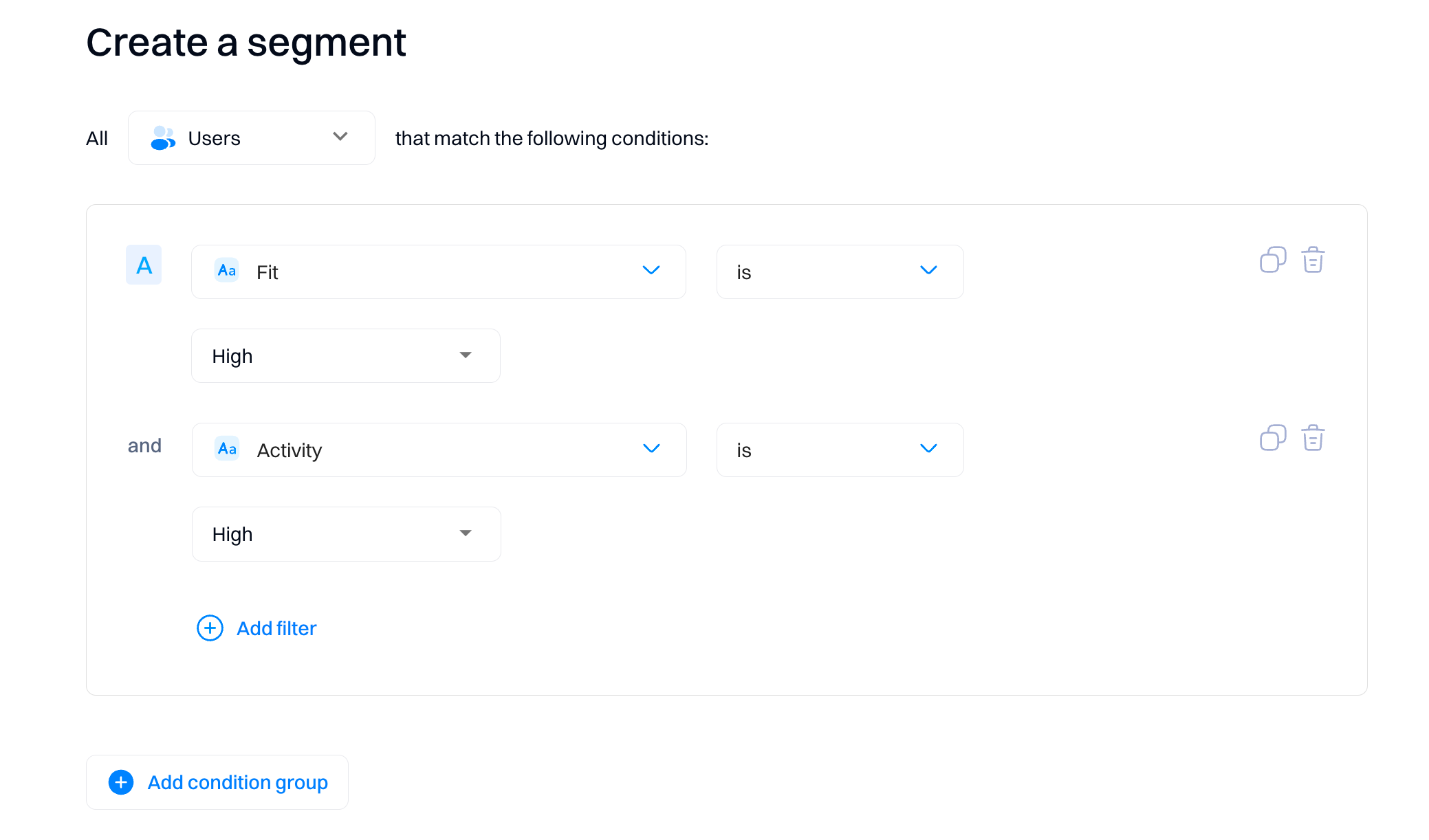
-
Implement targeted strategies:
- Develop personalized engagement strategies based on the segments. For instance, high-fit and high-activity leads can receive premium offers, while lower scores might receive nurturing campaigns to increase engagement.
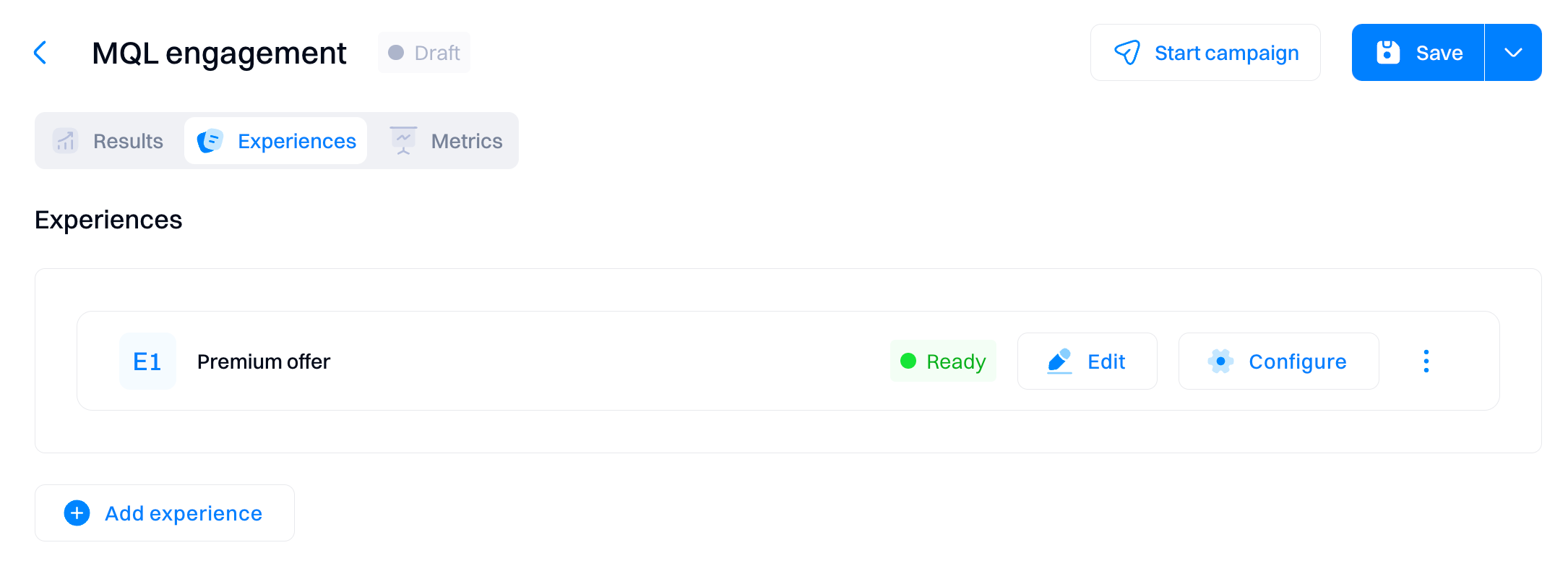
-
Track and refine:
- Continuously monitor the effectiveness of your segments and engagement strategies. Adjust the fit and activity criteria to improve lead qualification and conversion rates.
Step 5: Use the scores in journeys
-
Create a journey:
- Go to the Journeys section and select "Create Journey".

-
Define triggers:
- Set triggers based on the Fit & Activity scores. For example, use a high activity score as a trigger to enter leads into a nurturing journey.
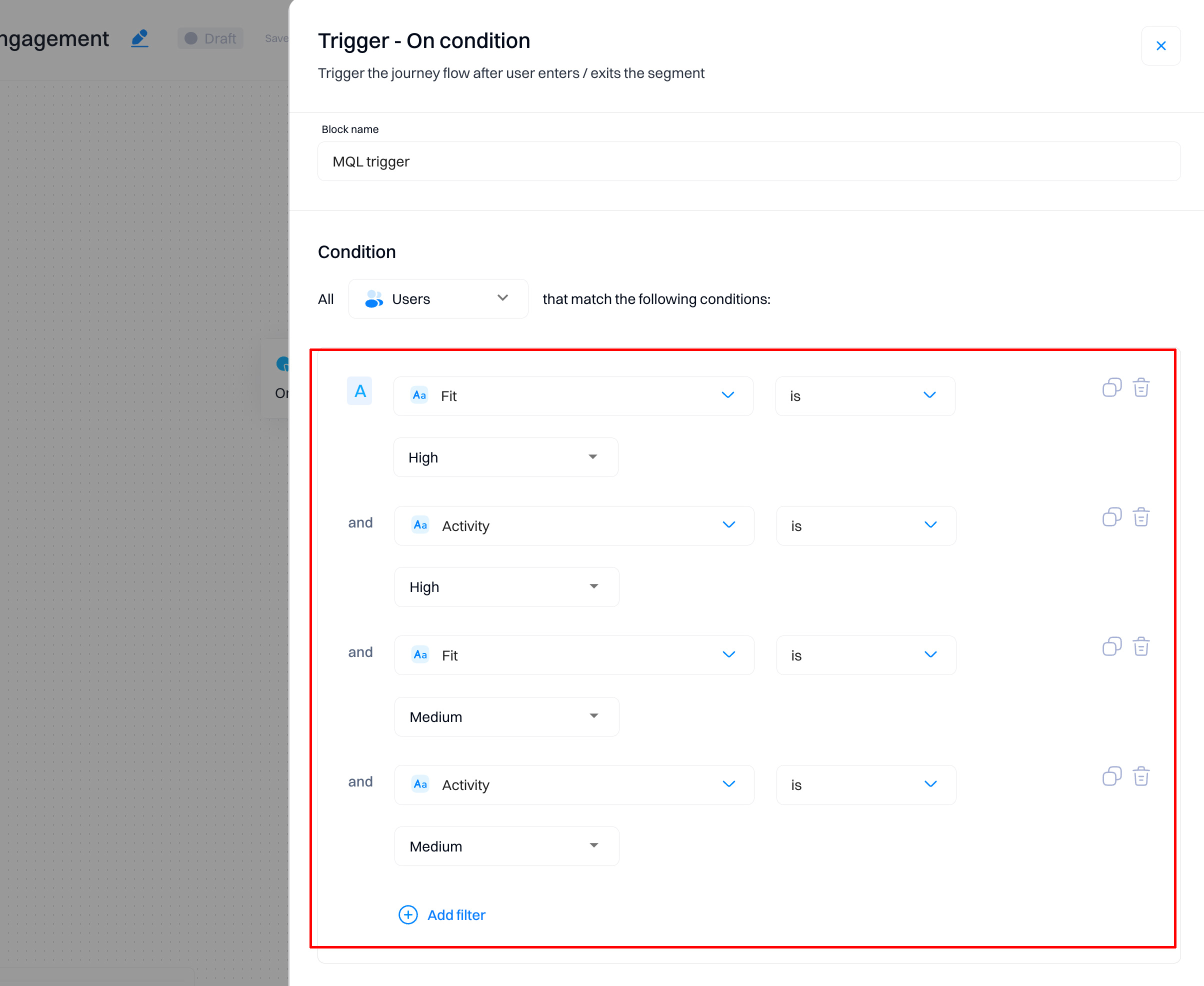
-
Set conditions:
- Use the score to set conditions within the journey. For instance, if the fit score is high but the activity score is low, send a targeted email campaign to encourage engagement.

-
Create actions:
- Plan actions within the journey that align with the scores. For example, high-score leads might receive special offers, while lower-score leads might receive educational content.
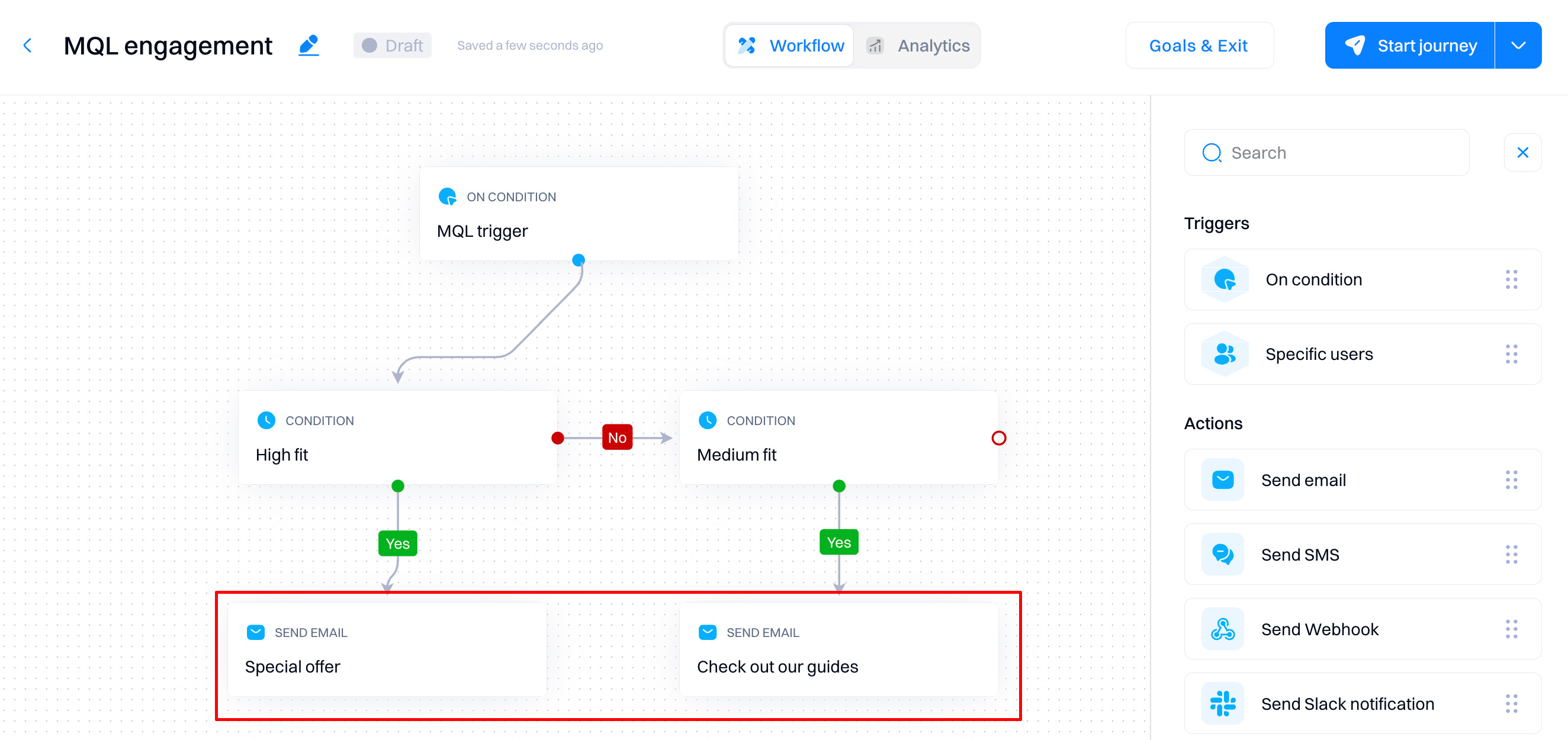
-
Monitor and adjust:
- Continuously monitor the journey’s performance and adjust actions based on the effectiveness of the engagement strategies.
Updated 7 months ago